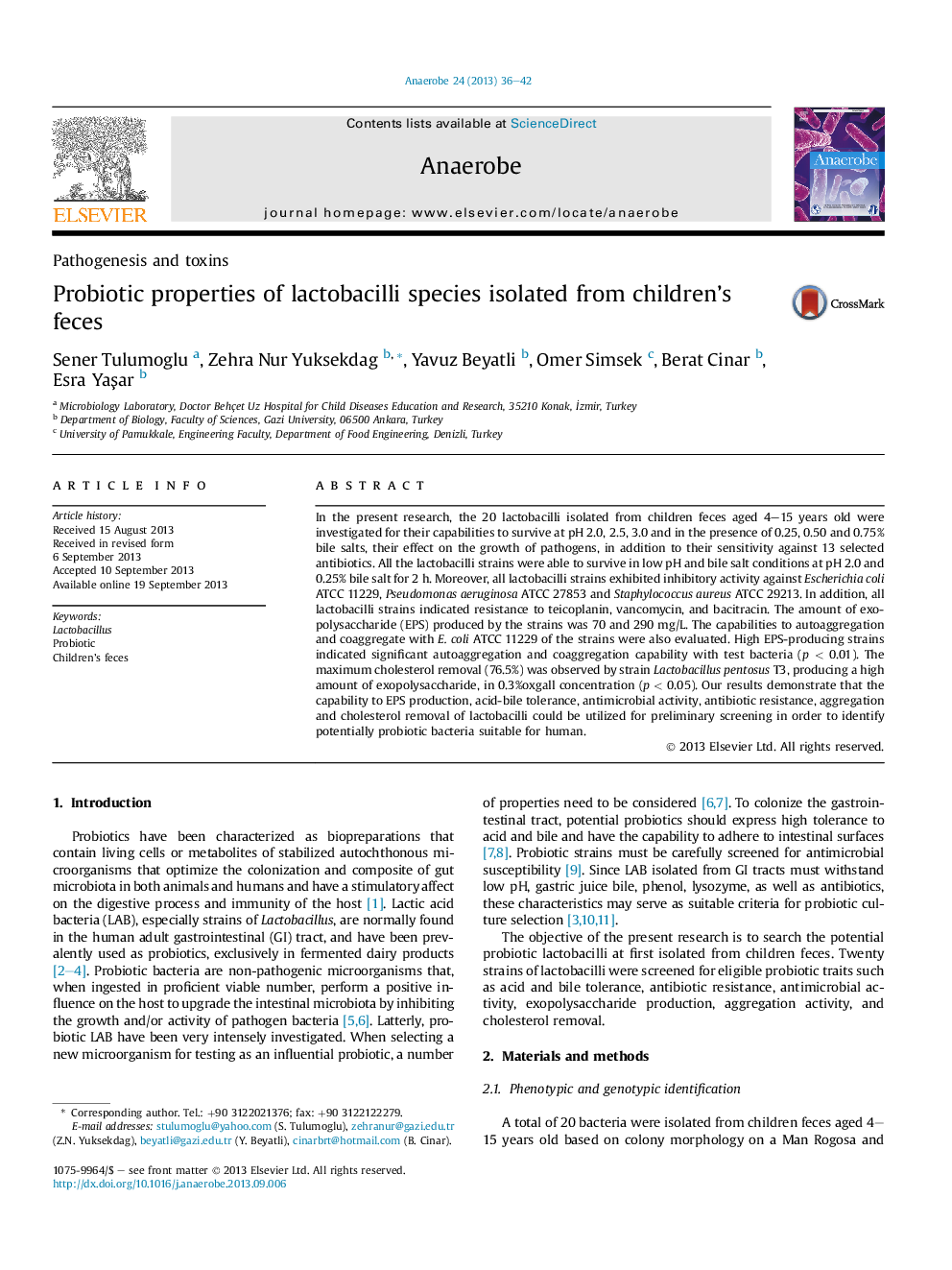| Article ID | Journal | Published Year | Pages | File Type |
|---|---|---|---|---|
| 3395167 | Anaerobe | 2013 | 7 Pages |
•Potential probiotic bacteria were able to survive in low pH and bile salt conditions.•These strains shown inhibitory activity against pathogen bacteria.•The ability of aggregation was exhibited.•EPS production and cholesterol removal were observed.
In the present research, the 20 lactobacilli isolated from children feces aged 4–15 years old were investigated for their capabilities to survive at pH 2.0, 2.5, 3.0 and in the presence of 0.25, 0.50 and 0.75% bile salts, their effect on the growth of pathogens, in addition to their sensitivity against 13 selected antibiotics. All the lactobacilli strains were able to survive in low pH and bile salt conditions at pH 2.0 and 0.25% bile salt for 2 h. Moreover, all lactobacilli strains exhibited inhibitory activity against Escherichia coli ATCC 11229, Pseudomonas aeruginosa ATCC 27853 and Staphylococcus aureus ATCC 29213. In addition, all lactobacilli strains indicated resistance to teicoplanin, vancomycin, and bacitracin. The amount of exopolysaccharide (EPS) produced by the strains was 70 and 290 mg/L. The capabilities to autoaggregation and coaggregate with E. coli ATCC 11229 of the strains were also evaluated. High EPS-producing strains indicated significant autoaggregation and coaggregation capability with test bacteria (p < 0.01). The maximum cholesterol removal (76.5%) was observed by strain Lactobacillus pentosus T3, producing a high amount of exopolysaccharide, in 0.3%oxgall concentration (p < 0.05). Our results demonstrate that the capability to EPS production, acid-bile tolerance, antimicrobial activity, antibiotic resistance, aggregation and cholesterol removal of lactobacilli could be utilized for preliminary screening in order to identify potentially probiotic bacteria suitable for human.
